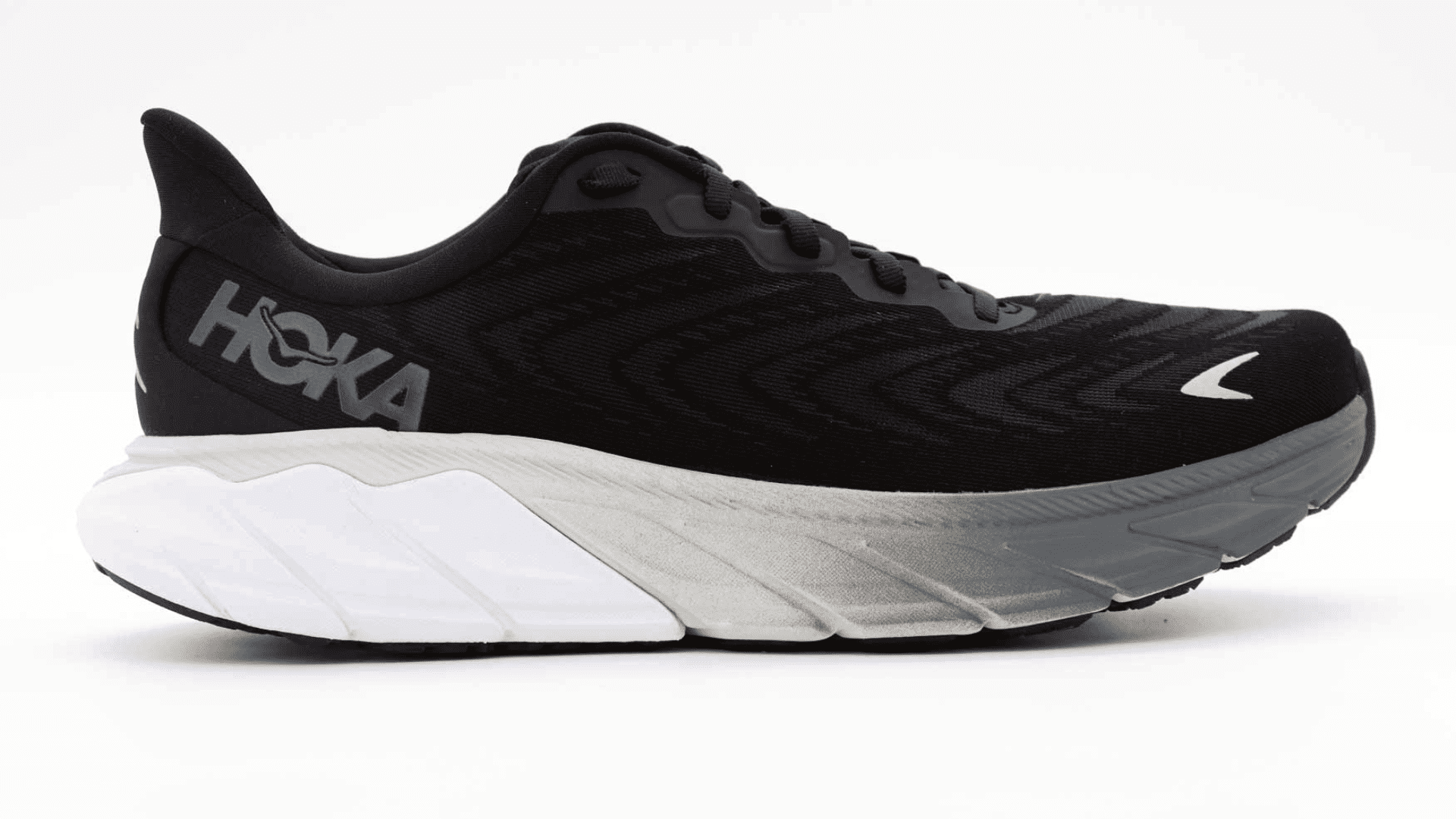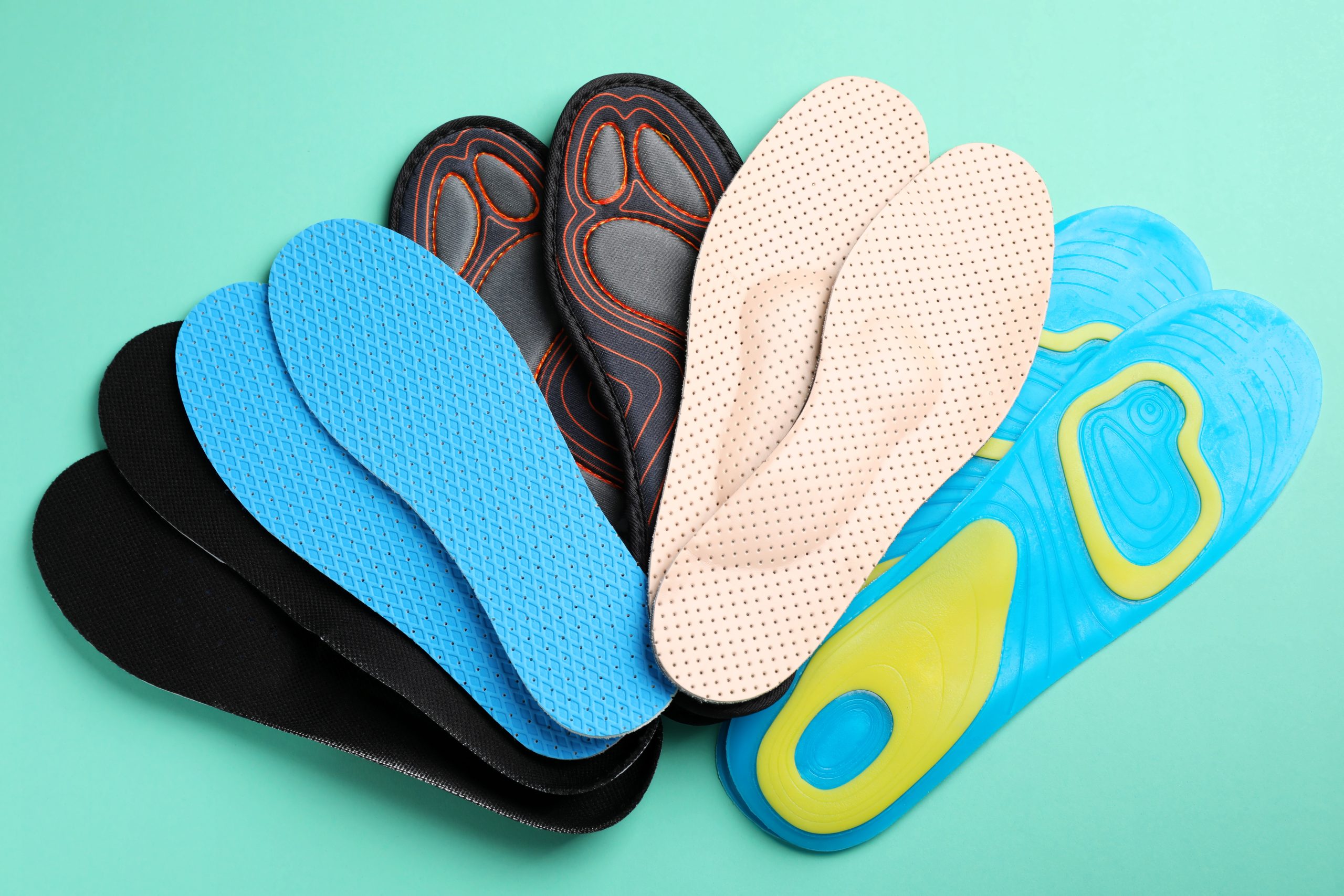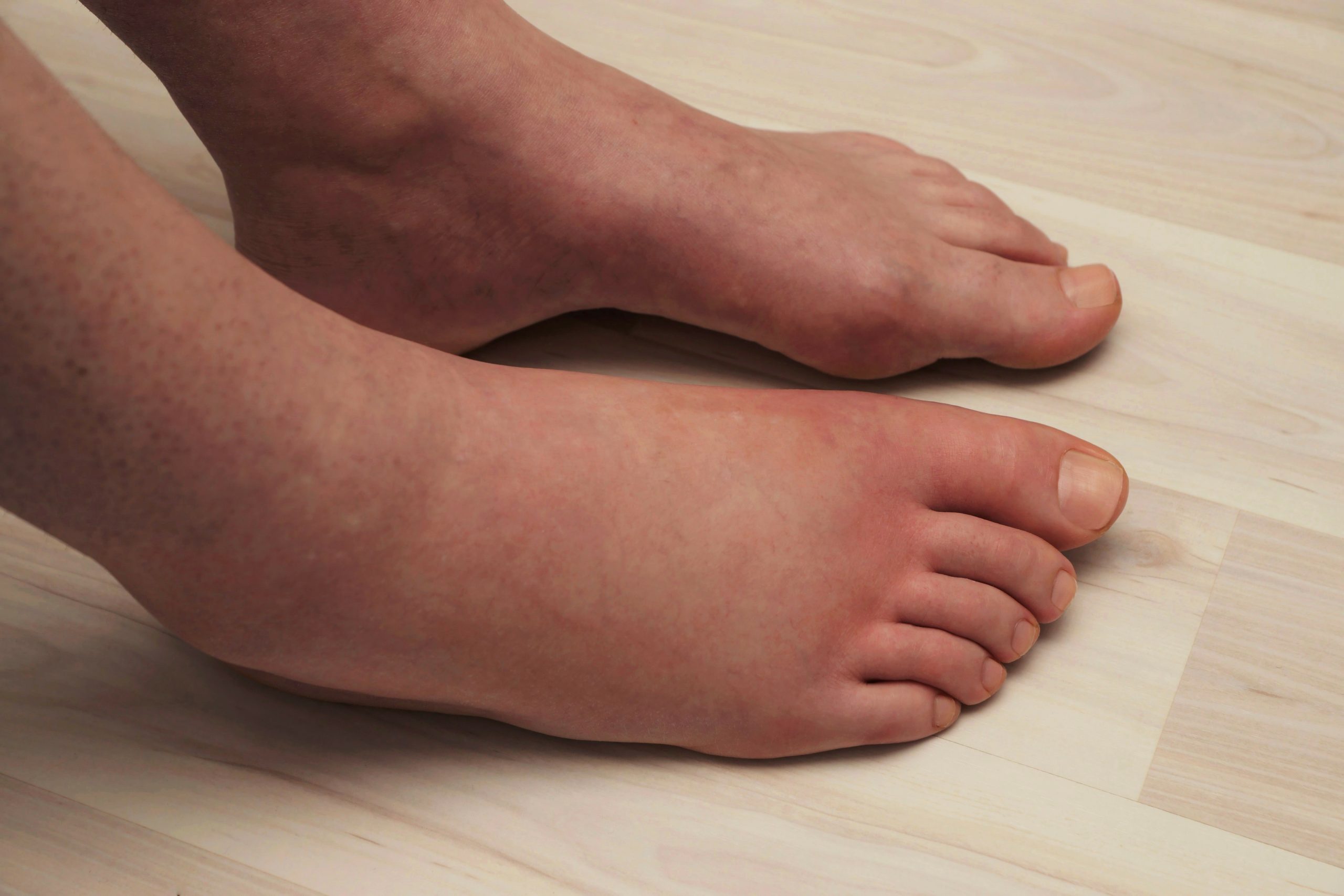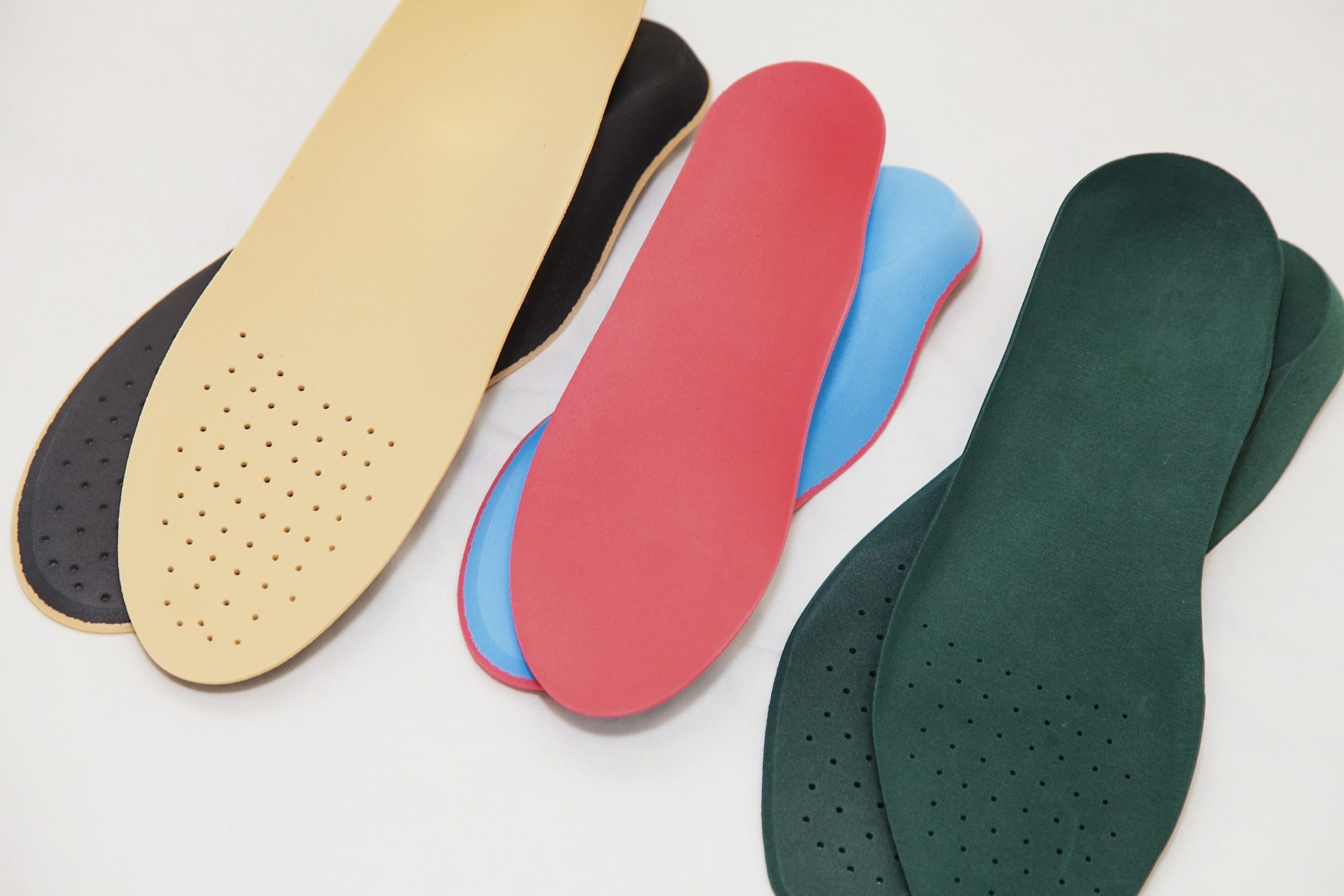
Orthotics, also known as shoe inserts, are devices that are placed inside footwear to help support and align your feet, ankles, and lower limbs in general. They can be used to alleviate a variety of health conditions, including plantar fasciitis, heel spurs, overpronation, and flat feet, as well as help to improve better overall posture and increase your general physical health.
However, not every insert that goes into your shoes is the same, or does the same thing. Prescribed orthotics, which are custom-made by a medical professional, are different from over-the-counter inserts that can be purchased at a pharmacy or any high street shop. In this blog post, we will explore the differences between prescribed orthotics and over-the-counter inserts, and discuss the benefits of each type.
We will also look at the role of a podiatrist in the process of getting them prescribed, and we’ll briefly go over some of the health conditions they can help you with. Whether you have your own orthotics, are considering having some made, or are simply curious, this blog will give you a better understanding as to the role orthotics can play in your foot health.
What are orthotics?
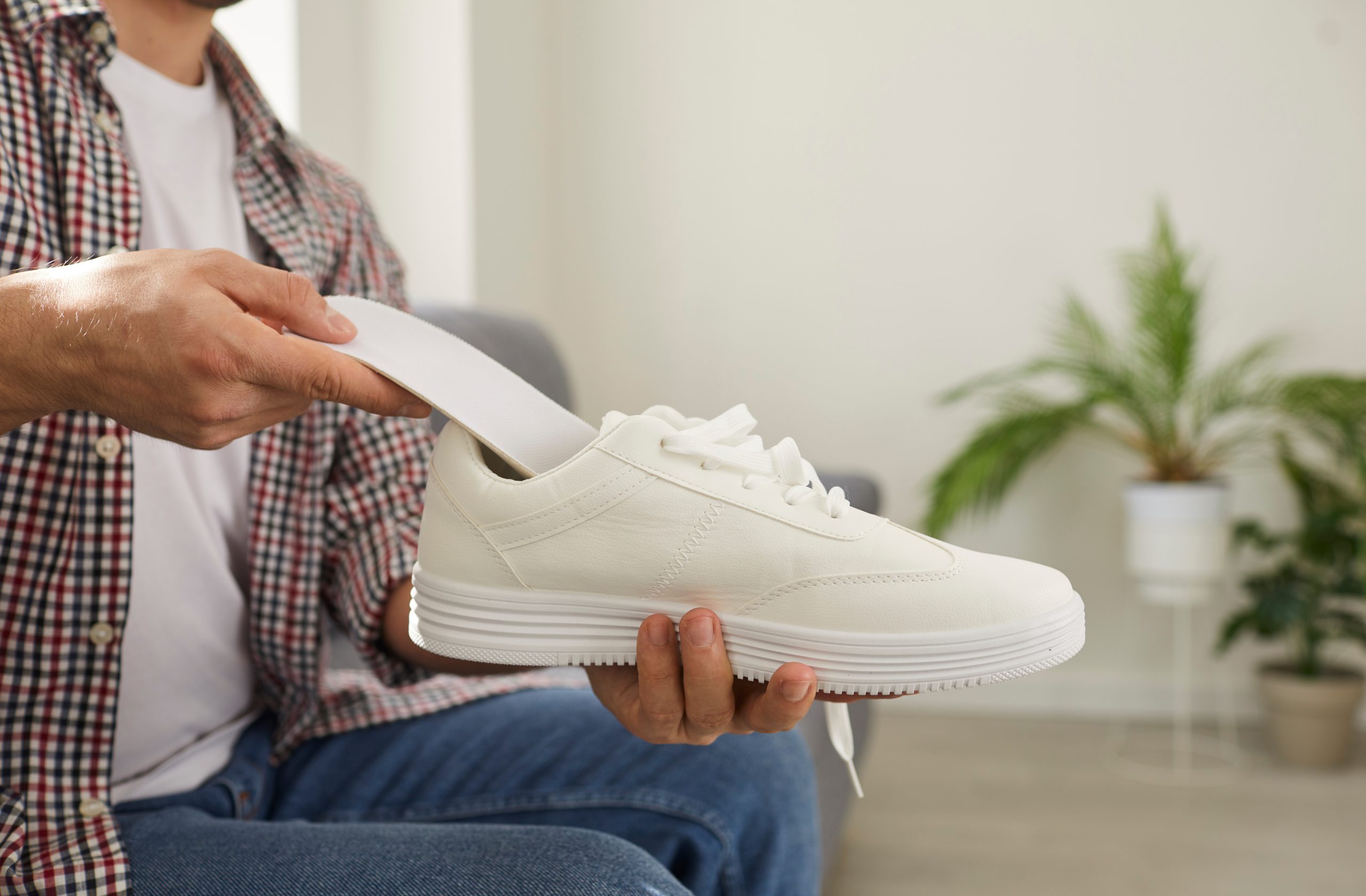
Orthotics, also known as shoe inserts, are devices that are placed inside shoes to help support and align your feet and lower limbs. They come in various forms, including custom-made, prefabricated, and over-the-counter which are normally just made with a generic mould. The main goals are to redistribute weight, reduce pressure, and provide support for your feet, which can help alleviate pain and discomfort caused by certain health conditions, or if you have any posture related issues such as overpronation.
Custom-made orthotics are specifically designed for an individual’s feet and are created by taking a mould or impression. They are typically made from a variety of materials, including plastics and composites, and can be adjusted for different levels of support or arch height. Prefabricated orthotics are mass-produced and not custom-made for the individual. They come in various sizes and can be adjusted to some degree using things like heat moulding, but not as much as something that is fully bespoke.
Over-the-counter inserts are the most commonly available type of insert and can be purchased at many pharmacies and high street shops. They are not custom-made and typically come in one size that fits all. They are usually made of less durable materials and provide less support than custom-made ones.
Orthotics can be used to treat a variety of conditions, including plantar fasciitis, heel spurs, overpronation, and flat feet. They can also be used to help with more specific conditions such as bursitis, tendinitis, and shin splints. We’ll go into more detail about this in the next section of the blog.
It is important to mention that orthotics are not a one-size-fits-all solution and it’s important to consult with a podiatrist to determine if orthotics are the right solution for your specific condition, and what type is most appropriate. If you have purchased one from a shop, we’d suggest you take it with you to your next appointment and show your podiatrist, just to double check it’s going to support whatever treatment plan they have given you.
Health conditions that orthotics help with.
Orthotics can be used to help alleviate a variety of health conditions that affect the feet and lower limbs. Some of the most common conditions that orthotics can help with include:
Plantar Fasciitis.
Plantar fasciitis is a common condition that causes pain in your feet, primarily affecting the heel area. It occurs when the plantar fascia, a band of tissue that runs along the bottom of the foot, becomes inflamed. This is normally due to wearing shoes that do not have enough support and structure. Orthotics can provide arch support which will help to redistribute weight, and can help ease the strain on your plantar fascia so it can rest and recover.
Heel Spurs.
Heel spurs are bony growths that develop on the heel bone. They can be caused by a variety of factors, including overpronation, poor footwear, and by putting your feet under too much stress. Orthotics can help redistribute weight, and will often have extra cushioning to help ease the pain in the affected area.
Overpronation.
Overpronation is a condition in which the foot rolls inward excessively when walking or running. This can lead to a variety of problems including plantar fasciitis, heel spurs, and shin splints. Orthotics can help control overpronation by providing more support that can help align your feet in a more optimal position.
Flat Feet.
Flat feet, also known as pes planus, is a condition in which the arch of the foot collapses and the entire sole of the foot comes into contact with the ground. Orthotics can help provide support to the arch of the foot and redistribute weight, which can help alleviate pain and discomfort.
An important thing to remember is that orthotics are not considered to be a cure for these conditions, but rather a tool that can help alleviate symptoms and improve overall foot function.
The role of a podiatrist.
When it comes to getting prescribed orthotics, the role of a podiatrist is essential. A podiatrist is a medical professional who specialises in the diagnosis, treatment, and prevention of conditions that affect the feet and lower limbs. They can assess your needs and create custom orthotics that are tailored to your specific condition.
When you visit a podiatrist for orthotics, they will conduct a thorough examination of your feet and lower limbs. This may include taking measurements, observing your walking pattern or gait, and evaluating the range of motion of your joints. They may also take an impression or mould of your feet to create a custom-fit orthotic. Some podiatrists may also be able to suggest some good footwear to use them in, though this is not something that every podiatrist will be familiar with.
In addition to creating custom-made orthotics, they can also provide other treatments for foot and lower limb conditions, such as physical therapy, medication, or surgery. They can also provide education and advice on how to prevent future problems.
It is important to note that orthotics are not always the best solution for every person, and a podiatrist can help determine if orthotics are the correct solution for your specific condition and guide you through the process.
Prescribed orthotics vs. over-the-counter inserts.
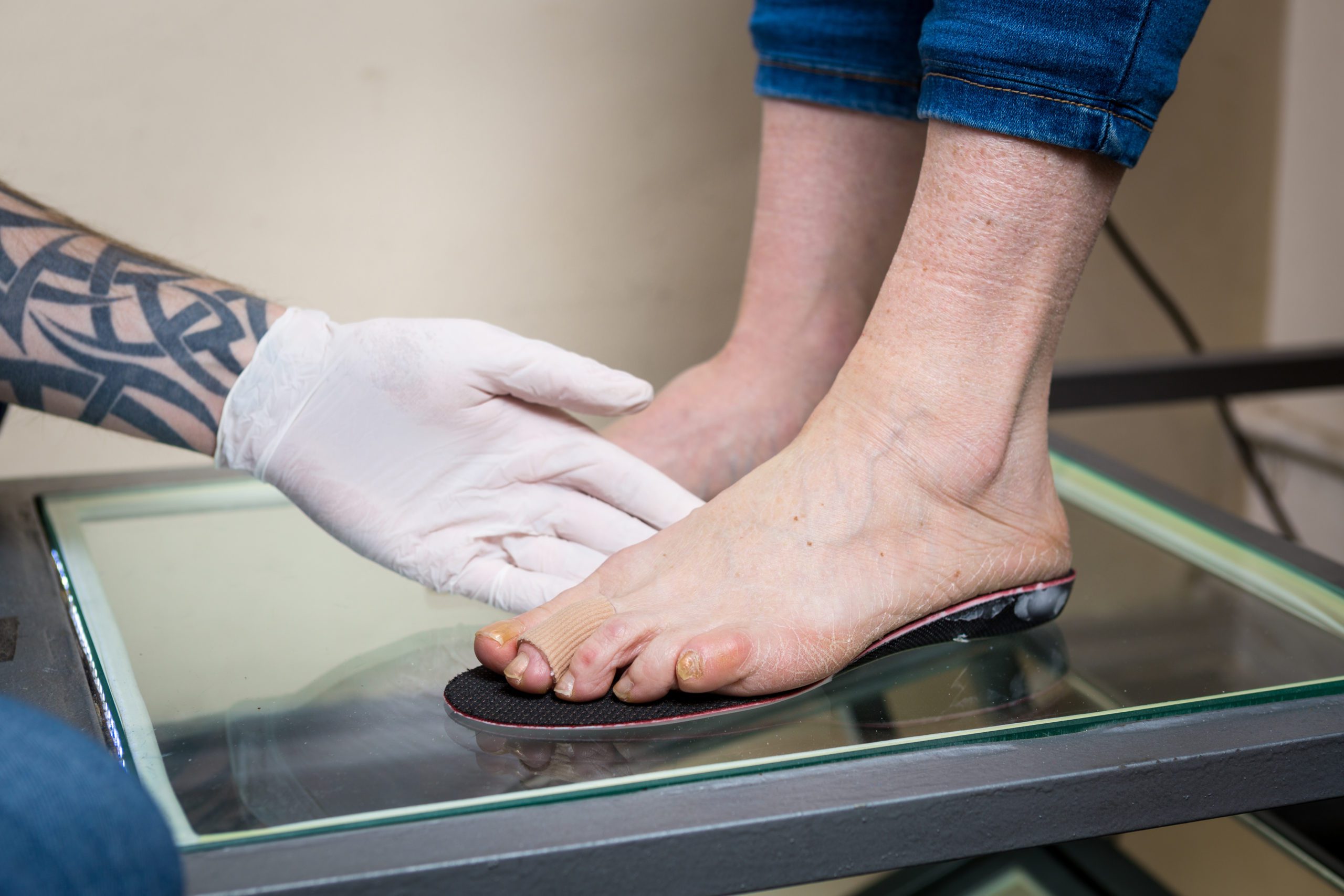
Prescribed orthotics and over-the-counter inserts are both designed to provide support and cushioning for the feet, but there are some key differences between the two.
One of the main differences is the level of customisation and support provided. Prescribed orthotics are tailored to an individual’s specific needs and are made to fit the person’s feet perfectly, whereas over-the-counter inserts are made with generic foot shapes in mind, so they may not be a good fit for your feet specifically. Additionally, over-the-counter inserts often feature a lot of marketing jargon, such as “gel support,” that doesn’t necessarily mean much in terms of actual support or effectiveness.
When considering the use of orthotics, one thing to remember is that it does entirely come down to your feet, lifestyle, and the conditions or discomfort you may be suffering with. For example, if you are walking 10 miles a day and are getting a lot of discomfort in your feet, or are recovering from a long-term injury, then it would definitely be worth considering seeing a podiatrist to have orthotics made for your shoes to help with your discomfort.
On the contrary, if you have bought new shoes and just want to replace the insole with something that feels ‘softer’, there is nothing wrong with buying something pre-made off the shelf. We’d just suggest doing it from a respectable shoe shop with knowledgeable staff, as whatever you put in your shoes still needs to match your needs, and needs to have the right level of support for you. A trained shoe-fitter with knowledge of foot-health and fitting shoes will be able to recognise what you need.
One last thing to mention is that there are some shops that offer an orthotic service in-store. If you are visiting one of these stores, just make sure that whoever is doing the initial assessments and making the orthotic has the necessary qualifications, expertise, and tools to do so. Otherwise, you may end up with something that either doesn’t work, or could cause more harm than good.
Final thoughts.
Prescribed orthotics and over-the-counter inserts both serve the purpose of providing support and cushioning for the feet. However, prescribed orthotics are custom-made to fit a person’s individual foot shape and address specific problems, while over-the-counter inserts are one-size-fits-all and may not provide the same level of support and customisation. When purchasing over-the-counter orthotics, it is important to ensure that they are from a reputable shoe shop or retailer. Additionally, consulting with a doctor or podiatrist can help determine if an over-the-counter insert will meet your specific needs.




